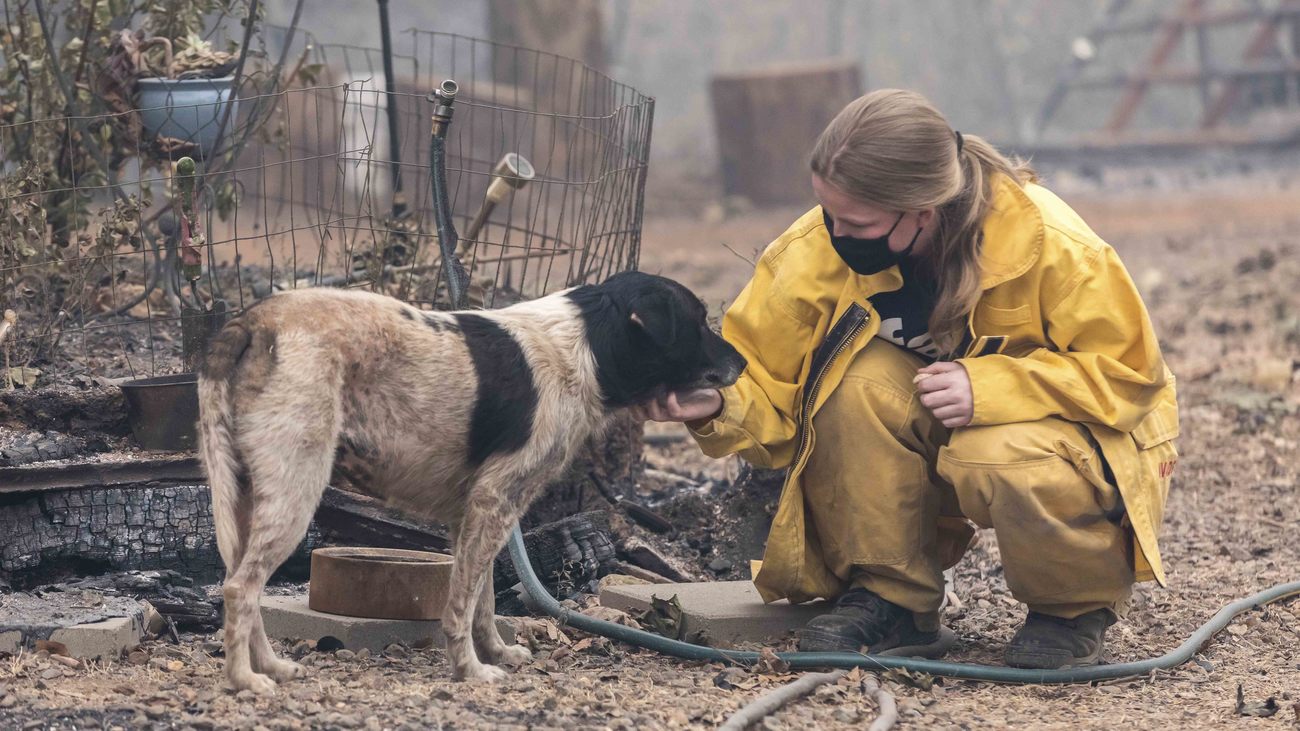Rescuing animals during disasters - United States
In a disaster, animals can’t ask for helpDisaster Preparedness Month: create an emergency plan that includes your pets
Disaster Preparedness Month: create an emergency plan that includes your pets

Storms, floods and fires continue to increase in frequency and intensity across Europe, displacing thousands of humans and animals alike. Many of these disasters can occur in a very short period of time, giving those affected very little time to prepare and evacuate. The number of multi-million euro disasters has nearly doubled over the past quarter century, with climate change exacerbating the rate and magnitude of such catastrophes.
Animals are critical to human society culturally, economically, and psychologically—their safety and wellbeing must be a key consideration in disaster response planning at all levels of community and government. According to Céline Sissler-Bienvenu, IFAW Program Manager for Disaster Response and Risk Reduction in Europe, “People and animals are being displaced and put in dire situations more and more frequently due to disasters. When this happens, IFAW is ready to respond, working to return a sense of normality – bringing hope to those affected. This could be through rehabilitating injured animals, reintroducing wildlife back into its natural environment, or reuniting families with their companion animals. We want to ensure animals are not left behind in disasters.”
IFAW is marking October as Disaster Preparedness Month in Europe, timed to International Disaster Risk Reduction Day on 13 October. The aim is to raise awareness about the importance of preparing for disasters and emergencies so as to reduce risk for both animals and people. In light of this, IFAW has created a checklist for preparedness for everyone’s favourite furry loved ones: pets.
Create a disaster response plan for your pets
- Write down a preparedness plan with your family: Include your pets in the planning—pets are family, too! Identify and list pet-friendly options for shelter: hotels, family or friends’ houses or evacuation centers. Share your plan with neighbours and friends. Designate a friend who can get your pets out if you should happen to be separated from them during a disaster and not allowed back into your community or area.
- Keep proper identification of your pets: Invest in a collar with your pet’s name and your contact number, have their vaccination records handy and a photo of you and your pet together. Keep a sticker or sign in your home’s door or window indicating the number and types of pets you have. And even better, in addition to a collar and tag, have your pet microchipped and keep their registration updated.
- Prepare an emergency go-bag for your pets: Pack an emergency kit or backpack with supplies for at least two weeks that includes ample food, water and treats for your pet. Other items for consideration include a collapsible feeding bowl, towels and blankets for bedding, a few familiar toys, medications and first aid supplies (like bandages, scissors, tweezers and antiseptic cream to treat wounds and burns), vaccination and medical records, an extra leash and collar, a portable litter box (for cats), pee pads and poop bags (for dogs), and a carrier or crate.
- Evacuate with your pets: During a disaster, if it is not safe for you, it is not safe for your pets. Never leave a pet behind, chained or caged!
Preparing ahead of time ensures a swifter transition to safe environments during a crisis. You will be grateful you did it and so will your beloved pet.
Related content
Our work can’t get done without you. Please give what you can to help animals thrive.